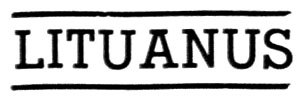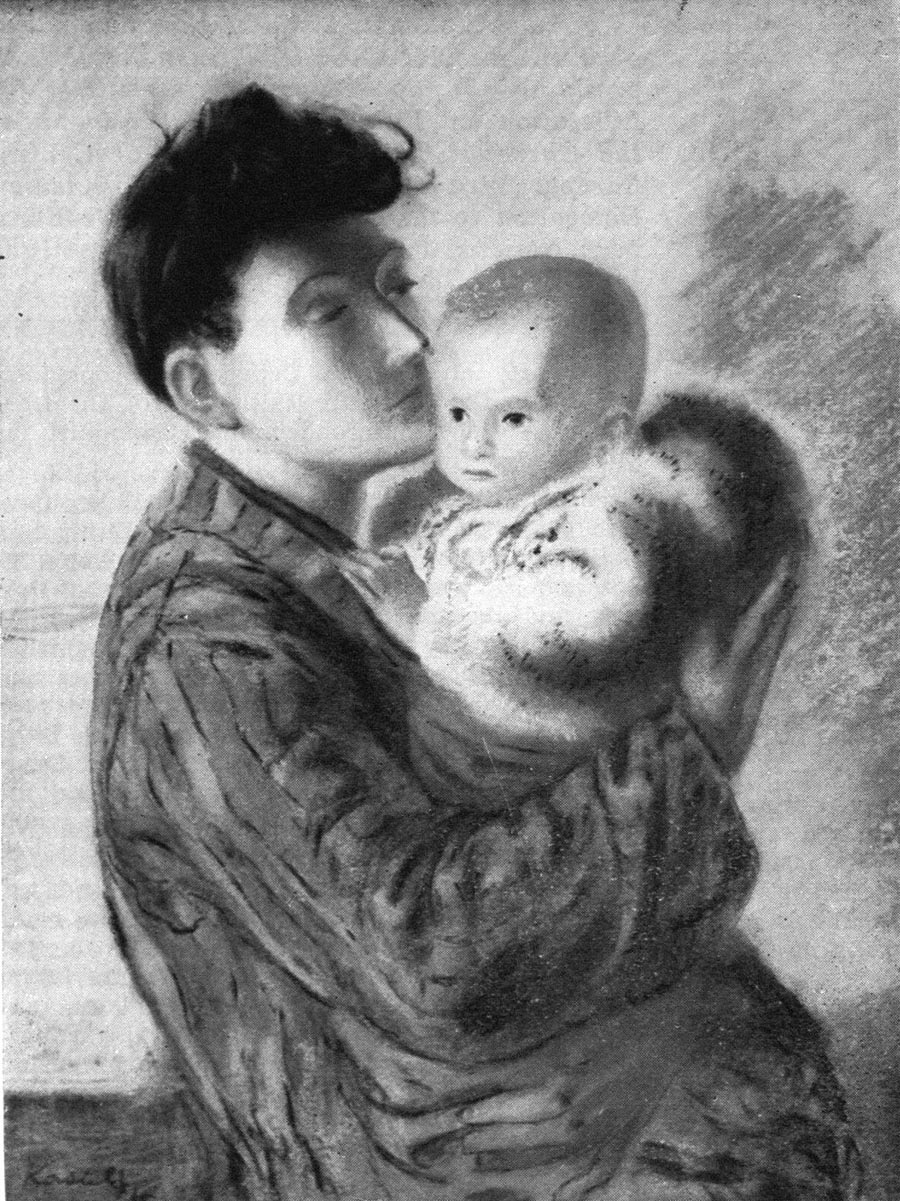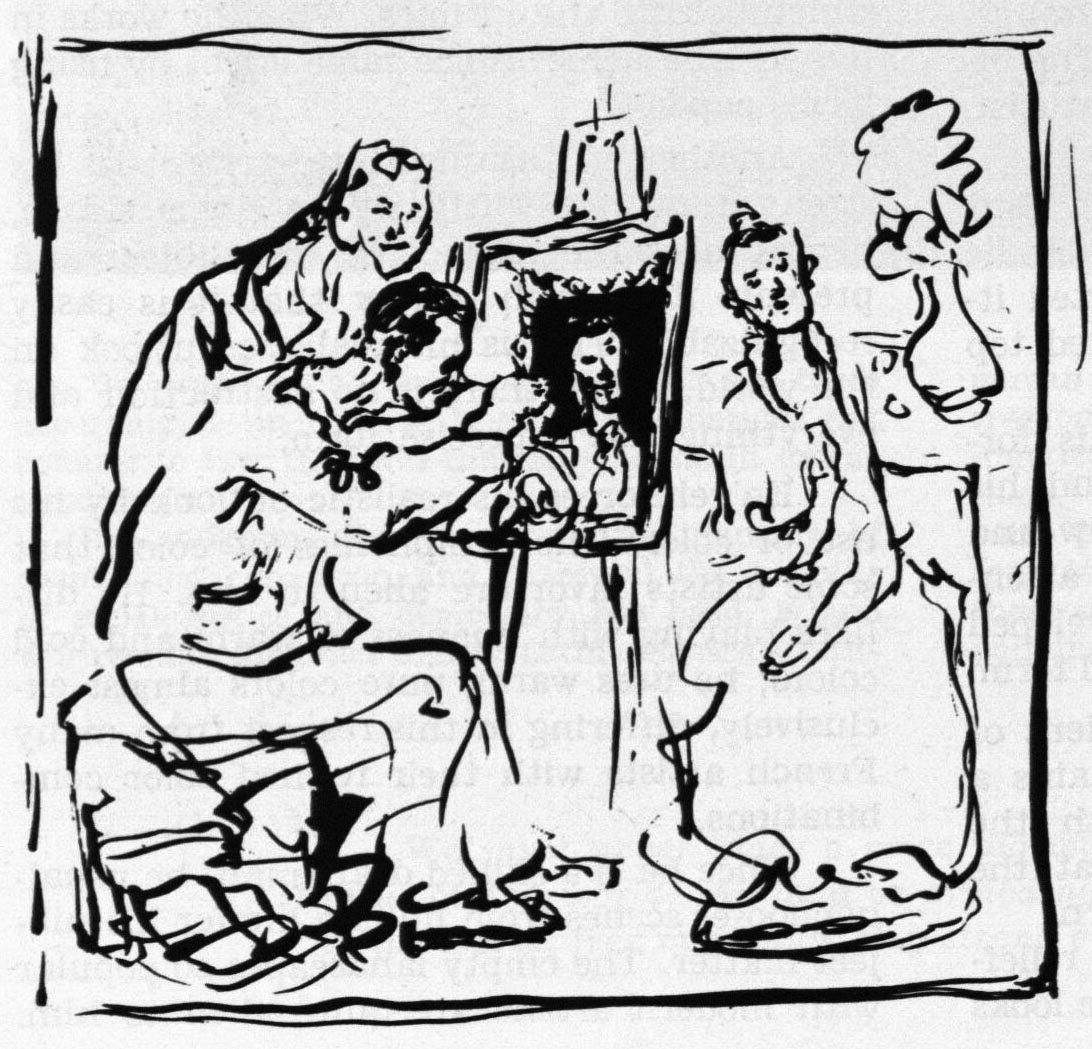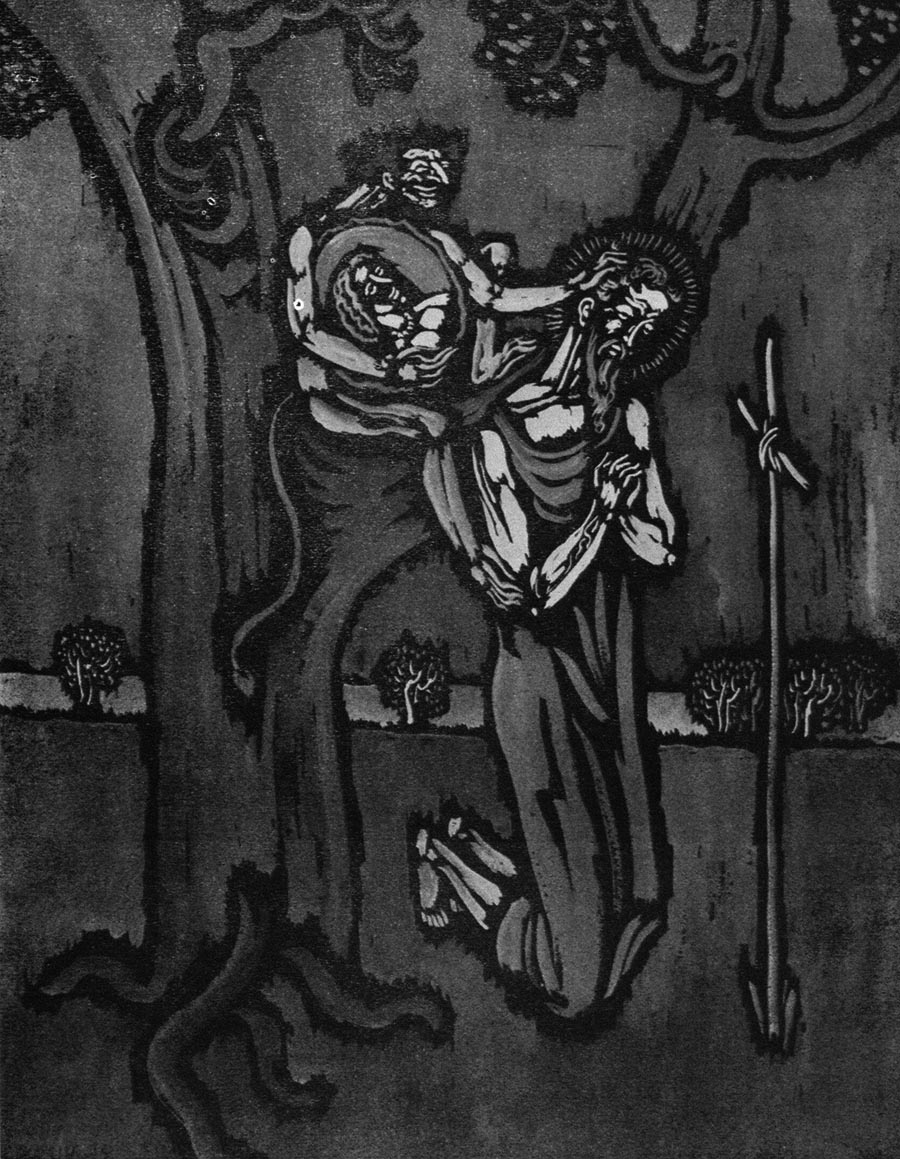
Managing Editor P. V. Vygantas
 |
www.lituanus.org |
|
Copyright
© 1957 Lithuanian
Students Association, Inc.
March,
1957 No.1(10)
Managing Editor P. V. Vygantas |
|
VYTAUTAS KASIULIS
Painter of the Joy of Life
PAULIUS JURKUS
PAULIUS JURKUS, a graduate of University of Vilnius, is an editor of Lithuanian newspaper "Darbininkas". He writes short stories, novels, poetry and articles on art and literature. His novel won the annual $1000 reward in 1956, sponsored by "Draugas", a Lithuanian daily published in Chicago.
THE CAREER of Vytautas Kasiulis, one
of the most outstanding representatives of the younger generation of
Lithuanian painters, grew out of impressionism; he was strongly
influenced by Degas. Nevertheless, it was not the poetry nor the play
of light that Kasiulis borrowed from impressionism but rather the way
of delineating the form itself.
He has the great natural gift: excellent draftsmanship. He graduated from the Kaunas School of Art as one of its most gifted pupils. As early as the German occupation of 1941-1944 he exhibited his paintings in Kaunas; they were especially notable for their realistic drawing combined with an impressionistic formulation of their themes. The influence of Daumier, the famous caricaturist, was also evident.
Later Kasiulis became an exile in Germany. From there he went to Paris, where he now lives; here his individuality asserted itself, and he became one of the hundred top Parisian artists.
In Paris Kasiulis has rejected his former masters Degas and Daumier, and his creative expression has taken on a new and unique form. He has concentrated his attention on line, purified his color and developed his whole composition in a more original form.
He desired to make use of his talent of full control over his drawing. He remains a realist, thereby aligning himself with the realist wing of the Parisian school; at the same time, he remains free and modern.
His originality expresses itself in a relieflike representation of reality. When one looks at his pictures one has the impression of decorative pictures on a wall tapestry, with the principal outlines bold and with details and shadows omitted.
This same effect of a relief can be obtained by placing a sheet of paper over a coin and rubbing it with a pencil; the raised parts of the coin will be reproduced in black on the paper. This principle is well known, but Kasiulis was the first to apply it to painting and find in it a unique style.
He often first covers his canvases with dark colors; over these he boldly applies other colors, leaving spaces between the application, which bscome the outlines. When he works in tempera he achieves the same effect by using black paper.
Another of Kasiulis' characteristics is his tcrong drawing. Swiftly, with a single stroke, he captures the essence of his subject and presents it in such a way that it is easily recognizable. This is his realistic outlook on the world, where there is no abstraction and everything has a precise form.
He reinforces his realistic outlook by his use of color. The symphonies of color that some artists favor are alien to him. He dislikes playing with nuances of warm and cold colors; he uses warm, pure colors almost exclusively, differing in this respect from many French artists with their refined color combinations.
Since he is a skilled draftsman, he usually chooses scenes from human life for his subject matter. The empty landscapes so popular with modern artists are quite alien to him. He usually chooses common people: artisans, beggars, street musicians. He has a long series of "little people" of the theater: actors, clcwns, dancers, musicians, guitarists. He is interested in the lovers he sees in parks, and is especially interested in fishermen.
His people do not dominate; they are created in general outlines, in a relief-like way, but they are neither crude nor stiff. On the contrary, one finds in them great elegance and warmth.
One of Kasiulis' chief characteristics is the optimism of his subjects; they are all poor, but they have not ceased to hope. It would seem that they have known neither pain nor want. They are all smiling. A Parisian organ grinder turns the handle of his instrument; his beardeven his parrot seem to partake in his smile. Fishermen return home joyfully, and the trees, the very fishes ihey cariy, smile with them. The artist's optimism is so great that it glows even from his still lifes; it carries the beholder to another world, one where the humble become bold, where the unfortunate possess ample opportunities, where lovers are assured of a happy ending.
It is not strange, then, that in 1954 Time magazine's critics captioned an article on him "Joy of Living," and went on to say that "the critics enthusiastically hailed Kasiulis as an oasis of joy in a desert of gloom and pessimism."
His first Paris exhibition was held in 1949, and he is now numbered among the foremost Parisian artists. His work is regularly shown at the Stiebei Galleries in Paris. He has had exhibitions in many cities of Europe; his first New York exhibition was held at the Hammer Galleries on Jan. 15-26, 1957. New York's Museum of Modern Art has brought several of his paintigs. He did the scenery for a motion picture. He is a member of "La Gilde Internationale pour la Gravure," which has only 30 members throughout the whole world.
Vytautas Kasiulis
was born in Lithuania in 1918. He graduated from the School of Art in
Kaunas in 1941 and later taught there. He also taught at the Institute
of Commercial Art in Freiburg, Germany.
TIME, May, 1954"In an
age, that tends increasingly toward gloom, horror and mathematical
coldness in art, the painter who makes a critical success with warm and
happy pictures is an exception. Such an artist is Vytautas Kasiulis, a
refugee from Lithuania."

Mother with Child

The Artist

Temptation of Saint
Anthony

Annunciation